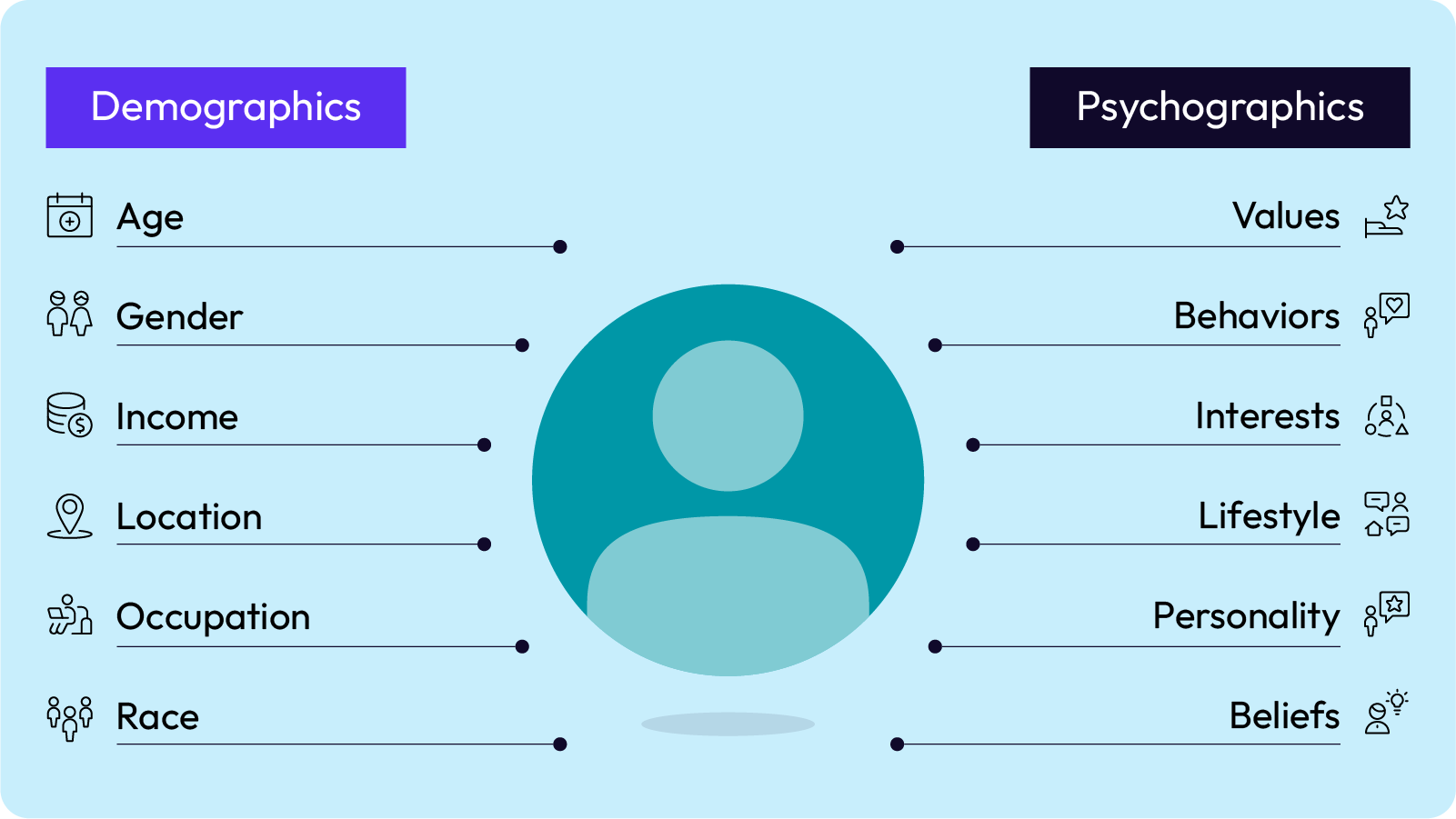For brands that sell their products and services across numerous channels, channel management is a must.
While leveraging a network of distribution channels is a great way to boost channel sales, it can also come with complications. Without the right level of strategic maintenance, your brand may miss major revenue opportunities across your partner ecosystem.
Learn the ins and outs of channel management, including the benefits of managing your channel network, how to create a strong channel strategy, and the best ways to resolve channel conflicts.
What is channel management?
Channel management is the process of coordinating and maintaining the channels by which your brand connects with its target audience, such as distributor networks, digital marketplaces, or direct sales teams. By strategically optimizing these channels and equipping them with the resources and support they need to drive results, you can expect greater marketing and sales outcomes.
There are various components of channel management that impact your overall channel sales, including:
- Marketing strategy
- Sales channel management
- Distribution channel management
- Channel partner enablement
- Channel conflict resolution
- Partner relationship management
Sales channels vs. distribution channels
A strong channel strategy addresses both a brand’s sales channels and distribution channels. While both channels ultimately move products to the end consumer, the means by which they deliver these products differ.
Sales channels
Sales channels are outlets through which brands sell their products or services directly to consumers without interference from intermediaries. Examples of direct sales channels brands commonly utilize include:
- Brick-and-mortar stores
- E-commerce websites
- Phone sales
- Field representatives
- Mobile apps
For example, say a customer purchases Sherwin-Williams paint from a Sherwin-Williams Paint Store or the Sherwin-Williams website — those would both be considered direct sales channels.
Distribution channels
Distribution channels, also known as indirect sales channels, are the indirect networks by which a brand sells its products and services — also known as its channel partners. Types of partners that can be found within a brand’s channel network include:
- Retailers
- Dealers
- Distributors
- Wholesalers
- Agents
- Resellers
- Affiliates
So, if a consumer buys their Sherwin-Williams paint from their local Lowes or Home Depot rather than directly from the brand, those would be considered distribution channels.
What are the benefits of channel management?
When you don’t manage your sales channels and partner ecosystem, you risk making some major marketing faux pas. But this practice isn’t just about mitigating risks — it also offers many advantages for your brand:
- Reaching more consumers: Channel management ensures that you and your partners leverage the most effective marketing strategies, resulting in greater visibility, brand awareness, and engagement for your brand.
- Tracking performance: When carefully managing your channels, you can better pinpoint which are contributing most to your business goals.
- Boosting revenue growth: The better enabled your channels are to drive sales, the more revenue they’ll bring in.
- Ensuring brand compliance: By properly managing your channel partners as they promote your products, you can ensure that all marketing complies with your brand standards.
- Increasing customer satisfaction: Optimizing your channels through channel management provides a better customer experience, leading to greater satisfaction.
- Improving partner relationships: By enabling your channel partners with the tools, resources, and support they need to promote your brand more effectively, you foster more positive relationships with them.
How to build a robust channel strategy in 5 steps
Channel strategy plays a significant role in channel management. It’s the blueprint a brand follows to get its products or services into consumers’ hands by leveraging the most effective sales, distribution, and marketing channels.
With these five steps, you can create a channel strategy that moves the needle.
1. Determine your goals
The first step of planning your channel strategy is to establish your business goals. What are your primary marketing and sales objectives? Is there a specific sales target you need to hit for an upcoming promotion? Are you trying to boost brand awareness? Do you want to expand market share? Whatever the goal, your channel strategy should align closely with it, as this will determine the marketing tactics that will help you best reach this outcome.
2. Define your target audience
Once you’ve determined the objectives you want to work toward, it’s time to pinpoint your target audience. When choosing these consumers, you should begin by evaluating audience demographics and psychographics.
Demographics describe the objective characteristics of a group of people — such as age, gender, income level, and location — whereas psychographics refer to mental and emotional drivers like values, behaviors, and interests. Assessing both of these areas is crucial for painting a complete picture of what your audience looks like and what motivates them to buy.

Once you’ve segmented your audience, you’ll be better equipped to market in a way that resonates with your intended consumers.
3. Select the proper marketing channels
Now that you know who you’re selling to, it’s time to meet customers where they are. In other words, figure out where these individuals consume most of their media — because all marketing channels are not created equal.
For example, 76% of adults aged 18-29 use Instagram, whereas this is true of only 36% of individuals aged 50-64. So, if Gen Z consumers make up the bulk of your target audience, Instagram would be a suitable channel to utilize. But for Gen X? Not so much.
Of course, age isn’t the only aspect you should evaluate when determining which marketing channels to leverage. Other considerations include:
- Cost-efficiency: Some marketing channels are more expensive than others. Keep budget in mind to determine which channels will get you the most bang for your buck.
- Marketing goals: The channels you choose should make sense with the objectives you’re working toward. For example, if you’re trying to build brand authority, organic search would align well with that goal, whereas direct mail probably wouldn’t.
- Nature of business: B2B and B2C audiences respond differently to different channels. For instance, you’ll likely have more success using LinkedIn to market to a B2B audience than a B2C one.
- Competition: A great way to nail down your marketing channels is to see where your competition is advertising their brand. Chances are, you’ll see results tackling the same channels.
- Type of offering: If you sell food, clothing, or lifestyle products, a visual platform like Instagram or TikTok might be a good move. On the other hand, more service-oriented offerings like healthcare or accounting might translate better through email or out-of-home advertising.
- Variety: The best channel strategy is spread across numerous channel types, sometimes referred to as omnichannel marketing. That’s why it’s a good rule of thumb to market across both digital and traditional channels to cover all your bases.
4. Measure channel performance
Once your campaign is live, you can’t set it and forget it. It’s important to measure channel performance over time so you can see what’s working and what’s not.
Before you can assess your campaigns, you’ll need to establish key performance indicators (KPIs) by which you can measure your success, such as revenue growth, engagement rate, and monthly site traffic.
To track your channel success, consider utilizing an analytics solution that can provide you with clear, data-driven metrics to measure your marketing efforts. With Ansira, you’ll have access to comprehensive performance summaries through insightful dashboards and reporting so you can gain complete visibility into your campaigns.

5. Refine over time
The reality of channel management is that not every strategy will be a home run. That’s why as you track performance, it’s essential to adjust your strategy as needed. If one tactic isn’t performing well, reallocate your resources to one that is.
Performance isn’t the only reason you might need to tweak your strategy. You may have to reevaluate as new trends emerge, holiday seasons approach, and economies shift.
Empowering channel partners
Your partner ecosystem plays a major role in your brand’s success. That’s why it’s crucial to prioritize your partner relationships.
Partner relationship management
Partner relationship management (PRM) is the process of nurturing and strengthening your brand’s relationship with its channel partners through an all-in-one platform. PRM platforms enable brands to better manage their partner ecosystems by providing a centralized location that houses all channel assets, tools, and communications, creating a more unified marketing experience. With an effective PRM platform, you can expect:
- Increased marketing efficiency
- Better communication
- Greater partner retention
- Advantage over competitors
- Greater cost savings
- Increased partner satisfaction
Key components of a PRM platform
Whether you build or buy your PRM platform, it’s crucial that it’s designed with channel partner enablement in mind — in other words, it should provide your partners with the tools, resources, and support they need to streamline their success.
When investing in partner relationship management, your platform should include:
- User-friendly processes: Your partners don’t have time to troubleshoot glitchy technology or overcomplicated processes, which is why your platform should be simple, straightforward, and easy to use. The more streamlined your PRM, the more likely your partners will be to participate in your marketing programs.
- Incentives: With channel incentives like marketing funds, rebates, and rewards programs, you can motivate your partners to go the extra mile and invest more in your marketing.
- On-brand assets: Marketing compliance isn’t usually top of mind for your partners. Your PRM should provide them with pre-approved assets and customizable templates they can use to ensure every campaign is on-brand and legally compliant.
- Resources and support: Channel partners don’t often have a strong grasp of marketing. Provide them with educational resources like online training sessions, articles, infographics, and videos to supplement their knowledge and help them improve their marketing expertise.
Navigating channel conflict
No business relationship is immune to conflict — and channel partnerships are no exception. Whether a partner butts heads with you or another affiliate, it’s important that you know how to settle these disputes and restore harmony to your partner ecosystem.
There are three main types of channel conflict:
- Vertical: Vertical channel conflict occurs between parties from different stages of the supply chain, such as a brand and one of its retailers.
- Horizontal: Horizontal conflicts occur between partners within the same tier of the distribution channel — for example, two retailers competing within the same geographic area.
- Multi-channel: These channel conflicts are more complex, occurring when two or more channels within a brand’s partner network compete within the same market, often selling the same products at different prices.
Primary causes of channel conflict
There are many reasons conflicts occur across distributed ecosystems. Some of the most common include:
- Pricing discrepancies: When one partner decides to sell the same product at a lower price, they create an unfair advantage over other partners while confusing consumers.
- Territory overlap: Partners competing within the same geographic areas may find themselves competing for the same customers.
- Poor communication: Lack of effective communication between a brand and its partners can create numerous issues, such as role ambiguity, unclear policies, and strategic misalignment.
- Contrasting goals: If a channel partner begins working toward a goal outside of the agreed-upon objective, major strategic clashes and disagreements can occur.
- Conflicting strategies: Even if all partners are aligned with the same goal, they may pursue it using different marketing strategies. With numerous strategies comes differing results, which can create tension between partners.
- Varying market views: If a brand and its partners have different perceptions of their target market, conflict may arise over how to best capture this audience.
- Resistance to change: Change can be scary, so it’s common for partners to pull back when a brand introduces sales and strategy changes.
Strategies for channel conflict resolution
Overcoming channel conflict and maintaining harmony across your partner ecosystem is often a matter of planning ahead. With the right preparation, you can prevent conflicts before they occur.
Set clear expectations
When operating a channel partner ecosystem, setting clear expectations from the get-go is a must. That means defining partner roles, establishing straightforward policies, and clarifying factors like pricing, territories, and sales targets. When putting these rules in place, be sure to use concise language and ensure consistency across all partner agreements to minimize the risk of confusion or friction.
Communicate regularly
Keep your partners informed about relevant business matters by maintaining consistent communication through regular meetings, email updates, or feedback sessions. But don’t forget, communication is a two-way street — that’s why you should also give your partners an opportunity to voice their thoughts and concerns.
By being transparent with your partners about what’s going on within the channel and allowing them to express themselves, you can expect much smoother channel management.
Evaluate performance
Regularly assessing your partners’ marketing and sales performance is a good way to maintain visibility over your channel network while also identifying problem areas. You can also reward high-performing partners to motivate them to go above and beyond and assist low-performing partners by offering constructive feedback and support to help them improve.
Leverage a PRM platform
With a robust partner relationship management platform in your corner, you can ensure that everything your partners need is housed in a single location. Through a PRM, you can provide your channel network with compliant, up-to-date assets, launch marketing and incentive programs, and offer a repository of helpful resources.
PRM platforms are excellent for unifying your entire partner ecosystem, minimizing roadblocks, and streamlining processes.
Channel management trends to expect in the future
Managing distribution channels is an ongoing process — and as the market landscape evolves, you’ll need to remain agile to adapt to these changes.
Here are the main shifts you can expect in the coming years.
AI will change the marketing game
It shouldn’t come as a surprise that artificial intelligence will eventually impact your channel marketing. But don’t worry — AI is on your side.
With the power of automation, your partners will be able to tackle campaigns more efficiently by streamlining manual workflows, leveraging data-driven insights, and generating compelling content in seconds. AI-optimized channel strategies will soon become the norm, and those that don’t utilize these technologies will fall behind.
More consumers will buy online
Another trend to look out for is the rise of e-commerce and digital marketplaces. In 2024, e-commerce made up 17% of all retail sales globally — and this number is projected to reach 21% by 2029.
As more and more consumers take to the internet to purchase products, brands and their partner ecosystems may need to utilize more digital strategies to attract this audience. Consider setting up microsites for each of your channel partners to deliver consistent and compliant brand experiences.
Amplify your channel management and boost channel sales with Ansira
With the power of channel management, you can turn your partner ecosystem into a well-oiled machine.
At Ansira, our industry-defining platform is designed to help brands synchronize their distributed networks and fuel brand-to-local growth. With four powerful modules within one centralized platform, plus a consulting services arm backed with over 100 years of industry expertise, you can ensure partners leverage impactful marketing tactics and invest their marketing funds with ease.
Book a demo today and have a no-pressure chat with one of our marketing experts to learn more.




